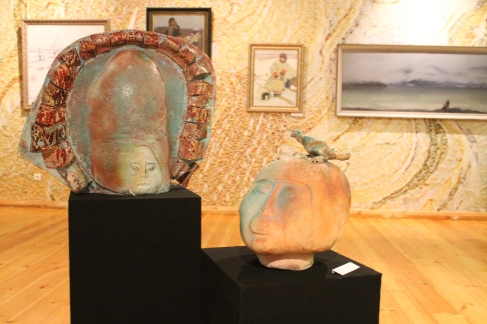Building off of Alexandra’s and Julia’s excellent posts about our 10-day immersion into the world of science policy, I thought I would share some thoughts from our climate legislation group exercise. I felt this practical experience – like the others indicated in Alexandra’s post – was adroitly woven into aforementioned conversations with prominent experts. In particular, this legislation exercise provided us with an opportunity to reinforce some of our earlier fundamental policy lessons through a mock Senate committee markup and vote on climate change risk management legislation, cementing the notion of thoughtfulness as being essential in any policy making endeavor.
The multi-day exercise began on a Wednesday with a review of H.R. 2380, the Raise Wages, Cut Carbon Act of 2009 (111th Congress), which was introduced on May 13, 2009 (but never enacted). The language can be found here. Essentially, this bill was a revenue-neutral amendment to the Internal Revenue Code of 1986, placing a tax on combustible fossil fuels and using these “carbon tax” revenues to offset social security taxes. The idea was for the cohort to introduce amendments in a Thursday session and hold a final vote during a Friday session.
Stated goals for the participants, through the experience of doing, included developing a practical understanding of the potential political views of and landscape for the offices we respectively represented, as well as those of our fellow committee senators, and organically establishing an informed strategy for building consensus. With 36 graduate students, faculty, and professionals in the field of atmospheric sciences divided into nine small groups, each representing one member of the Senate’s Energy and Natural Resources committee (113th Congress), the activity seemed a touch audacious. Then again, how hard could this be?
!["Senator" groups discussing how to interpret and respond to proposed amendments. [photo courtesy Julia Bradley-Cook]](https://dartmouthigert.files.wordpress.com/2014/06/markup1.jpg?w=500&h=375)
“Senator” groups discussing how to interpret and respond to proposed amendments. [photo courtesy Julia Bradley-Cook]
The committee markup exercise itself, streamlined for the purposes of the colloquium, allowed each “Senator” to offer one first-degree amendment to the bill and one second-degree amendment (an amendment to an amendment). Possible amendment strategies, also streamlined for the purposes of the exercise, ran the spectrum from actual, substantive improvements to the language and/or outcomes contained in the original bill to suggestions that, for all intents and purposes, makes it impossible for the altered bill to pass.
To say our cohort approached this with zeal may be understating the fervor with which we embodied our respective committee members. Every “Senator” offered a first-degree amendment as well as one second-degree amendment – an unofficial first in the 14-year history of the colloquium. Every “Senator” used at least 8 of their 10 allotted total minutes of speaking time to explain and advocate their amendments. Yes, there were amendments that split states along energy production criteria. Yes, there were amendments that split states along demographic criteria. Yes, there were impassioned floor “speeches” and exuberantly titled amendments (e.g., the “Reinvesting in Secure Energy (RISE) for America” amendment – RISE for America(!)). One amendment even had a catchy slogan!
The impressive moment of the exercise, in light of all that led up to it, predictably occurred near the end of the exercise. Over the course of three days, we collectively discussed and debated the virtues and failings of all the amendments. During the last day, a growing comprehension amongst the cohort began to fill the room. As we marched through each “yay” and “nay” vote, arguably complicating an already arguably elegant (i.e., simple and straightforward) bill with our amendments, a simultaneous desire for consensus emerged. The nine chosen “Senators” included four Democrats, four Republicans, and one Independent. Just before the vote on the final proposed amendment, a request for a short recess to confer with our respective party caucuses was called. This move may have even surprised our esteemed moderator, Paul Higgins (Director AMS Policy Program). This presented an opportunity to find common ground amidst our challenging sea of amendments. But how? A strategy emerged out of the hurried recess that somehow resulted in an amended bill we all were able to vote on (and pass).
Realistic? Perhaps not, but the process we experienced contained rich lessons in diplomacy, compromise, and the importance of relationships. We never would have come close to our (perhaps) fanciful bill without conversations with each other. Overall, this simplified exercise illuminated the complexity and nuance of legislation creation (and ratification). It also echoed the concept of knowing what your audience (e.g., constituents, fellow committee members) wants. Judy Schneider, Specialist on Congress at the Congressional Research Service and one of our esteemed speakers, discussed the important “P’s” underpinning governance: policy, politics, procedure, and patience. I would say our legislation group exercise experience emphasized the truth in her statement.
![Class photo on the grounds of beautiful Mt. Vernon. [photo courtesy AMS]](https://dartmouthigert.files.wordpress.com/2014/06/spc2014_mtvernonphoto.jpg?w=500&h=375)












